As communities strive to become more sustainable, community and business leaders should consider adopting energy-efficient practices in their operating systems and building structures. According to the U.S. Energy Information Administration (EIA), the average monthly commercial utility bill in Ohio was $616.53 in 2017—slightly below the national monthly average of $654.71—totaling nearly $7,400 for the entire year. These costs can weigh heavily on small business budgets. The National Federation of Independent Businesses (NFIB) found that 1 in 10 small business owners say energy is their greatest cost—more than salaries, materials, and supplies—while another 25 percent say energy is their second or third largest expense.
Implementing energy-efficient practices gives businesses the potential to see a return on investment that strengthens their bottom line. These ROIs can then be put toward investments like product improvements, customer service, or community events. Commercial buildings could save up to $60 billion by increasing investments in energy efficiency by just 1 to 4 percent, Buildings magazine reports. Below, we’ve outlined practical ways communities and small businesses can become more sustainable through energy-efficient practices.
Conduct an Energy Audit
As you seek to become more energy-efficient, it’s important to first understand where your business currently stands in terms of energy efficiency. Conduct an energy audit to benchmark the performance of your building and business operations. Energy Star Portfolio Manager is a great tool you can use to measure energy usage by the utility meter. Using this tool helps you leverage this information to:
- Compare your energy use against similar buildings, businesses, and communities.
- Identify Energy Conservation Measures (ECMs) and set target goals.
- Engage team members to work toward finding ways to conserve energy.
Switch to LED Lights
Compared with incandescent and fluorescent (CLF) light bulbs, LED bulbs to offer a more energy-efficient option to businesses and communities. LEDs require fewer watts to produce a high level of brightness, meaning these bulbs require significantly less energy. To light an LED for 25,000 hours, it would only cost about $30, compared to the $50 average cost for CFLs and $169 average cost for incandescent bulbs during that same time period. Furthermore, most LEDs can last an average of 25,000 hours—compared to the 8,000-hour lifetime of CFLs and the 750-hour lifetime of incandescent bulbs—so you won’t have to replace the bulbs as frequently.
Businesses and communities should consider replacing their building bulbs and street lights with smart LEDs to save money, reduce energy, and be more sustainable. Smart bulbs are internet-capable LED light bulbs that allow lighting to be customized, scheduled, and controlled remotely, so you can better manage the energy usage of lighting fixtures.
Mantaline Corporation serves as a great example of how making the switch to LEDs can improve a business’s bottom line. By taking advantage of NOPEC’s Property Assessed Clean Energy (PACE) energy efficiency financing, Mantaline used the funds to upgrade the lighting in their Hiram facility. By replacing the existing fluorescent fixtures with LEDs, Mantaline was able to save approximately $19,000 annually in energy savings and maintenance costs.
Install a Coof Roof
Cool roofs provide another way for businesses and communities to be more energy-efficient and thus sustainable. A cool roof is a roofing system that has the ability to reflect visible, infrared, and ultraviolet wavelengths off the sun, radiate absorbed non-reflected solar energy and reduce the amount of heat transferred to a building. Compared with cedar and asphalt shingle roofs, cool roofs have a longer lifespan, provide greater comfort, and reduce energy usage and urban island heat effect. In addition, cool roofs can also decrease greenhouse gas emissions and power plant emissions like carbon dioxide, sulfur dioxide, nitrous oxides, and mercury.
The Cuyahoga County Public Library’s Parma Heights branch is currently relying on NOPEC’s Savings Through Efficiency Program (STEP) to finance a cool roof system. As the roof is still being built, it’s too soon to measure results. However, based on other case studies, the library should expect to see a positive return on investment. For example, a case study by Starkweather Roofing, Inc., revealed that Nationwide Insurance Company experienced a 7.79 percent year-over-year decrease in electricity costs required to cool their Scottsdale, Arizona building after installing a cool roof.
Use Renewable Energy Sources
Renewable energy sources, including solar, wind, hydropower, and geothermal energy, can help businesses and communities be more sustainable by providing energy that the EIA says is “virtually inexhaustible.” Forbes reports that renewable energy costs have been steadily decreasing, making them competitive with natural gas and other fossil fuels. As renewable energy costs continue to trend downward, leveraging renewable sources will be critical to the sustainability of communities and businesses.
In Ravenna, for example, Sirna and Sons Produce sought energy efficiency financing from NOPEC to help install a 452.5-kilowatt system on their roof, which includes 1,331 solar panels. The Record Courier reports that this system should cut carbon emissions by 650 tons every year and pay for 35 percent of the company’s electricity costs. The company expects a six-year payback on its energy-efficient investment.
Leverage Smart Technology
Smart devices can help businesses automate their energy-efficient practices. Consider investing in the following smart technology:
Smart Power Strips
When electrical devices, such as computers, printers, and TV monitors, aren’t in use, they can still draw power in standby mode. These “phantom power loads,” as they’re commonly called, waste energy and drive up costs on your electricity bill. Smart power strips can help manage the energy usage of your devices by automatically shutting down devices that go into standby mode to prevent energy from being wasted.
Smart Thermostats
Heating and cooling account for about 17 percent of the average commercial utility bill, according to the EIA. However, the U.S. Department of Energy says at least 10 percent can be saved on heating and cooling costs each year by turning your thermostat back 7 to 10 degrees from its normal setting for eight hours a day. Smart thermostats can help businesses manage these costs by adjusting your heating and cooling schedule to business operating hours.
Smart Windows
To further reduce heating, cooling, and even lighting energy usage, smart window systems can help manage the amount of sunlight that enters a building. As the Earth revolves around the sun, window glazing and films respond by attracting heat during the winter, blocking rays during the summer, and providing natural sunlight during the daytime. According to a study by Lawrence Berkeley National Laboratory, businesses can save 19 to 26 percent on cooling and 48 to 67 percent on lighting energy costs by implementing smart window technology.
Receive Energy Efficiency Financing
Want to be more sustainable through energy-efficient practices? NOPEC helps communities and small businesses become more sustainable through our PACE and STEP loan programs. Government and commercial properties in NOPEC communities are eligible to receive financing with low-interest rates for energy efficiency improvements, such as cool roofs and LED lighting, and renewable energy projects like wind turbines and solar photovoltaic panels.
Look out for the next installment to our sustainability series by following NOPEC on LinkedIn. In the meantime, visit NOPEC to learn more about our energy efficiency financing options.
Joyce Mihalik is an industry leader, with over 30 years’ experience serving the energy community in Northeast Ohio. She holds a bachelor’s degree from The Ohio State University and an MBA from the University of Akron. Throughout her career, she has set the strategic direction for energy performance, energy conservation, procurement, and resale. As Chief Operating Officer at NOPEC, she evangelizes on the mission to aggregate, educate, and advocate for community members and businesses.


